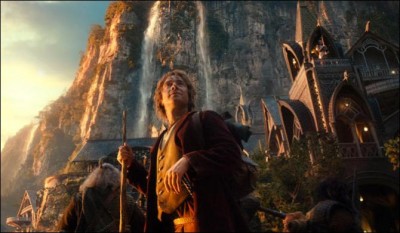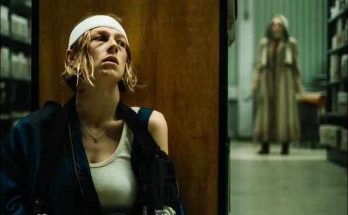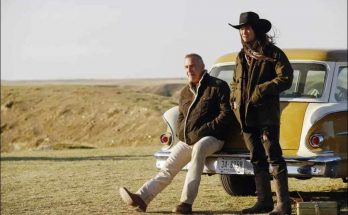“In a hole in the ground there lived a Hobbit.
Not a nasty, dirty, wet hole, filled with the ends of worms and an oozy smell,
nor yet a dry, bare, sandy hole with nothing in it to sit down on or to eat:
it was a Hobbit Hole, and that means comfort.”
— The Hobbit, by J.R.R. Tolkien
On September 21, 1937, J.R.R. Tolkien published a children’s book called The Hobbit, or There and Back Time. Since its first publication, the book has sold more than 100 million copies and been translated into some 50 languages. In 75 years, it has never been out of print.
The Hobbit, as it became popularly known, emerged from the imagination of the revered author, poet, university professor and philologist as a bedtime story for his children, but the text is illuminated by the author’s love of nature and fairy tales, his experiences in war, and his sense of kinship with humble souls who prevail against insurmountable odds.
The tale of the Hobbit Bilbo Baggins, who is plucked from his comfortable Hobbit Hole and plunged into a wondrous and dangerous adventure in the company of the Wizard Gandalf the Grey and 13 Dwarves, has been devoured by generations of readers as a literary rite of passage. It at once defined the call to adventure, the nature of honor and loyalty, the yearning for home, and the quiet courage of the unlikeliest of heroes. It also introduced to the world the complex civilizations and magical landscapes of Middle-earth-a deep and richly layered world that Tolkien would spend his life exploring in his writings — which would have a profound cultural impact around the world.
Though the book inspired adaptations in a variety of media, from the stage to comic books to video games, The Hobbit has never been fully realized on the big screen…until now. In the world of contemporary cinema, there is one filmmaker who has proven his passion and dedication for bringing this masterpiece to life — who has famously ventured into Middle-earth before.
Over a decade ago, director Peter Jackson embarked on his own quest to adapt the later Tolkien work into the groundbreaking The Lord of the Rings Trilogy — three films that have carved their own indelible place in the cultural lexicon. Each was a blockbuster that garnered critical accolades and awards, culminating in the final film, The Lord of the Rings: The Return of the King, which won 11 Oscars, including Best Picture, Best Director and Best Screenplay.
Tolkien had moved on from The Hobbit to write his three-volume opusThe Lord of the Rings, but Jackson’s journey went in the opposite direction. Following his experience making The Lord of the Rings films, he is now going back in time to tell what was, in fact, the first part of that story, which unfolds 60 years earlier, in a new trilogy, beginning with The Hobbit: An Unexpected Journey.
“When we made The Lord of the Rings, I was absolutely sure it was going to be a once-in-a-lifetime experience,” Jackson comments. “It was an amazing and very special time, but when it was over, none of us believed that we’d ever be venturing into Middle-earth again. However, the experience of making The Hobbit Trilogy became equally special to all of us. So now I have had a once-in-a-lifetime experience twice in a lifetime.”
Though Jackson was involved in the development of the project from the start, only when he dove into the work of crafting the screenplay with his longtime collaborators Fran Walsh and Philippa Boyens, along with Guillermo del Toro, did he decide to direct the films himself. Drawn in by the thematic threads and emotional struggles woven throughout the propulsive narrative, he envisioned films that would mirror the scale, breadth and high stakes of The Lord of the Rings films.
“The Hobbit has a breathless pace because Tolkien was writing it as a story for his children and for the children of the world,” Jackson notes. “It’s a ripping yarn that moves from event to event, and really doesn’t stop. It’s a little more humorous than The Lord of the Rings, the characters are a little more colorful, but it nonetheless has elements of greed and madness, of an innocent who is changed forever, and of the gathering forces that will lead directly into the events in The Lord of the Rings. This is where it all starts.”
With The Hobbit: An Unexpected Journey, the filmmakers hoped to bring the story to vibrant, visceral life, with all the magic and majesty, humor and darkness, and intimate human emotion that the author himself provided. Screenwriter/producer Fran Walsh notes, “We always saw The Hobbit as a slightly more golden-hued fairy tale. But, by the time you get to the end of the novel, I think you can see how Tolkien puts himself in the place where he would begin that epic journey of writing The Lord of the Rings That, to us, is our natural transition point into that darker time. The nature of honor and leadership and power — those big themes that are quite prevalent in The Lord of the Rings — were being awakened in The Hobbit.”
To service this transition in crafting the screenplay, Jackson, Walsh and Boyens did not simply adapt The Hobbit as originally published. What many people may not know is that the author himself continued to develop the story further, ultimately publishing extensive notes about the time in which The Hobbit unfolds within 125 pages of appendices that he included at the end of The Lord of the Rings. “The Hobbit was the first time Tolkien let the rest of the world into his incredible mythology, the world of Middle-earth,” says Philippa Boyens, the avowed “Tolkien geek” among the screenwriting team. “There are conflicts, relationships and events that are hinted at but not explicitly described in the book. So when Tolkien sat down to write its sequel and ended up writing The Lord of the Rings, he took time to revisit the events surrounding The Hobbit because he had a very strong sense that within this little children’s book were the seeds of a greater legend.”
This incredible resource freed the filmmakers to grow the world and tell more of the story in their film. But, at the same time, they saw themselves as shepherds of a work they all loved, and as they wove in some of the darker elements, they took care not to compromise the tone of the book. “The Hobbit was almost a lifetime’s work for Tolkien,” Jackson attests. “And a lot of the ideas he had for fleshing out the story-the environment and the politics of the time-are all there in the appendices of the final volume of The Lord of the Rings. What became clear to us is that the story has the ability to expand yet still be The Hobbit that everybody knows and loves. So that’s what we did, using his notes very much as our blueprint. I found it fascinating that something with a relatively innocent beginning ultimately becomes an epic unto itself.”
They also wanted to fully immerse the audience in Middle-earth. For the first time, Jackson utilized state-of-the-art digital cameras to record the action in 3D at an unprecedented 48 frames per second (fps) for release in High Frame Rate 3D (HFR 3D), as well as all the standard formats. “We want The Hobbit films to be a visual experience that goes several steps beyond The Lord of the Rings,” Jackson says. “3D didn’t really exist in mainstream cinema ten years ago at the level it does now, and we’ve shot the movie at 48 fps, which makes it the first feature film to be shot using today’s High Frame Rate technology.”
Jackson once again drew together members of the cast of The Lord of the Rings, including Ian McKellen as the Wizard Gandalf the Grey, Cate Blanchett as Elf Queen Galadriel, Hugo Weaving as Elf Lord Elrond, and Andy Serkis once again playing Gollum. Framing the story are Elijah Wood reprising the role of Frodo Baggins, and Ian Holm as Old Bilbo Baggins, who recalls his great adventure prior to leaving Bag End. Leading the international ensemble cast are Martin Freeman as Bilbo Baggins, the Hobbit at the center of the tale, and Richard Armitage as the Dwarf warrior Thorin Oakenshield.
Together, this team of filmmakers and artists embarked on a new adventure — once again shooting three movies back-to-back to create a new motion picture trilogy, one that begins with a Hobbit living in a hole in the ground, on the brink of an incredible, and quite unexpected, journey.
Visits: 141



